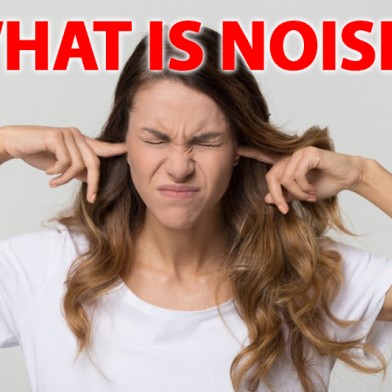What is noise?
- 02 September 2020 23:16:26
- Reviews: 0
- Views: 4653
-

Noise is perceived as a real problem, harmful to health. To protect yourself from it, there are solutions: the best technical solution is to reduce the noise level by effectively soundproofing various walls, corners and noise conductors.
Noise is the emission of sound vibrations heard by humans. These fluctuations correspond to changes in air pressure (pressure, depression). Noise is expressed in decibels (dB). The decibel measures the sound pressure level of noise or sound.
Various noise levels
 The sound level indicates the intensity of the noise (or sound) compared to a reference scale: 10 to 130 decibels, acoustic pressure corresponds to different types of noise sources and generates a perception ranging from calm (below 40 dB) to pain (above 120 dB)
The sound level indicates the intensity of the noise (or sound) compared to a reference scale: 10 to 130 decibels, acoustic pressure corresponds to different types of noise sources and generates a perception ranging from calm (below 40 dB) to pain (above 120 dB)
Noise scale:
- 100 to 130 dB: pain threshold. Emelny shop, jackhammer, jet engine on the ground.
- 80 to 100 dB: dangerous noises. Train passing, loud music.
- 60 to 80 dB: fatiguing noise. Very busy street, TV.
- 40 to 60 dB: Annoying noises. Quiet office, normal conversation.
- 10 to 40 dB: slight noise. The wind rustles the leaves, the desert, the apartment is quiet.
The evaluation or measurement of noise makes it possible, on the basis of the identified sound, to determine the purpose of isolation for a given sound level. To be noticeable, any acoustic improvement, most commonly expressed as "attenuation level" or "isolation", must be at least 3 dB.
What types of noise can be heard in a building?
We can distinguish four main types of noise that you need to protect yourself from for a comfortable living environment:
 Outside airborne noise is caused by road, rail, air traffic, etc. It is often of a lower frequency, but is sometimes referred to as "road noise".
Outside airborne noise is caused by road, rail, air traffic, etc. It is often of a lower frequency, but is sometimes referred to as "road noise".- indoor airborne noise comes from radio, voice, TV, Hi-Fi… They are also sometimes referred to as “pink noise”;
- impact noises result from shaking or vibration: movement of people (heels) or furniture, falling objects;
- Equipment noise is generated by elevators, valves, boilers, mechanical ventilation, heating or air conditioning systems, roller shutters, etc.
How is noise propagated?
External airborne noise is transmitted through the air and through walls, facades, windows, roofs, as well as laterally through internal walls and partitions.
Airborne interior noise propagates in the room from which it is emitted, then directly through walls and partitions separating two rooms, and indirectly through side walls or floor and ceiling partitions.
Impact noise, or structure noise, or even impact noise is transmitted by vibration of the structure and building walls (floors or walls) and side walls.
Equipment noise can be transmitted directly or indirectly through the air and as impact noise when walls vibrate.
What is the difference between soundproofing and correction?
There are 2 main principles:
- soundproofing (or sound): is a set of measures to reduce the transmission of noise from a source to places that need to be protected or isolated. The insulation prevents the transmission of noise FROM ONE ROOM TO ANOTHER . Isolation is the noise reduction (hence gain) expressed by the index (Rw) given in (dB).
- acoustic correction: it concerns the propagation of sound energy in the same local area (e.g. dining room, showroom, courtyard, but also the large living room of individual houses), and aims to reduce the reflection time of noise on the walls it encounters (echo effect) . The correction is expressed by the index α w (sound absorption index).


